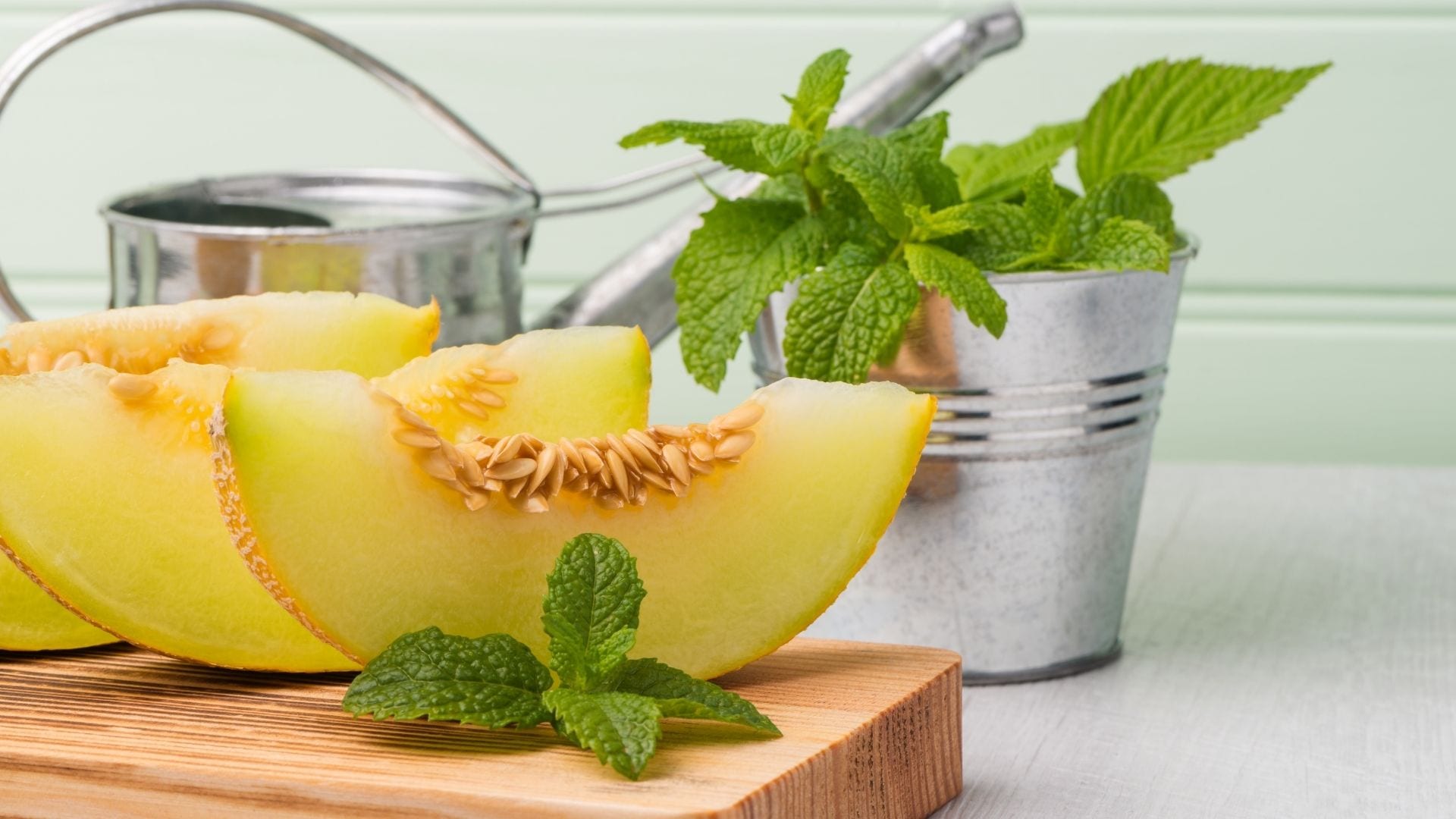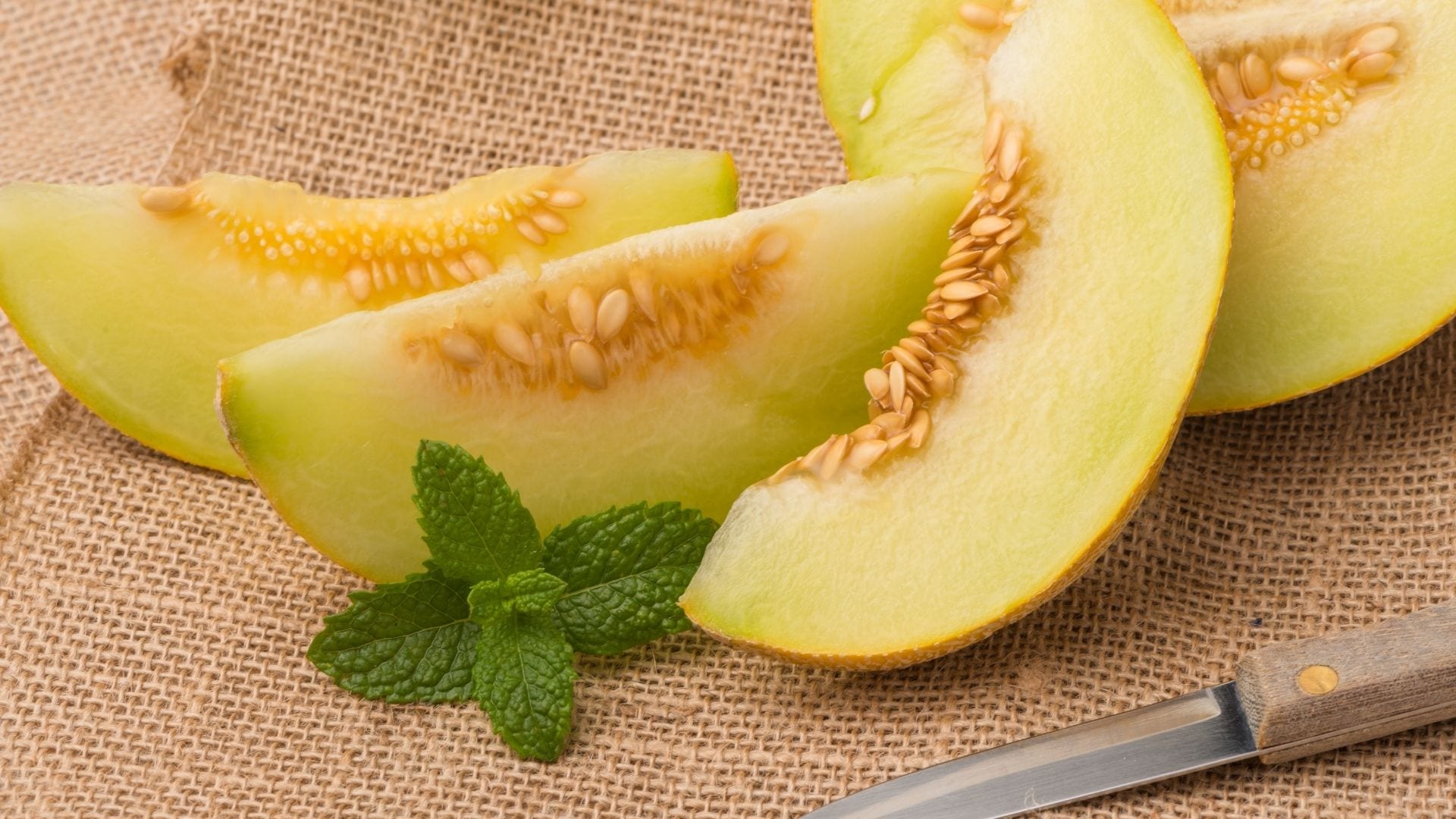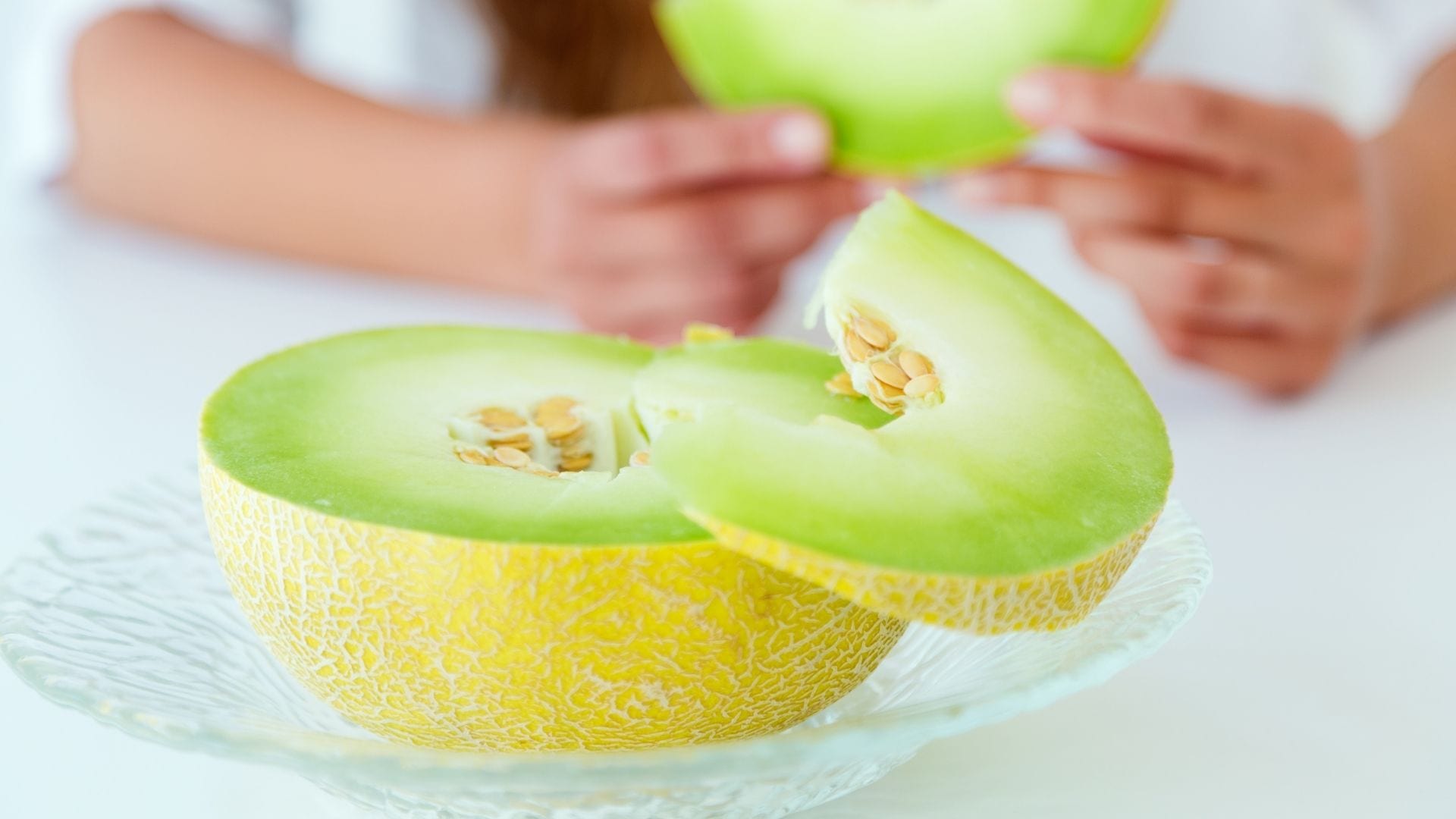More cucumber than watermelon: fascinating facts about the honeydew melon!

The sky is bright blue, the weather entices you outside into nature, and at some point you develop a yearning for a juicy and healthy snack. The honeydew melon is yellow as the sun and an ideal refreshment on hot days. But apart from the fact that it is a vegetable rather than a fruit, this delicacy has other surprising qualities. This article gives you some fascinating facts about its origins, name, constituent substances and ideal preparation.
Vegetables are defined as coming from an annual plant, i.e. from a plant that dies after one year. This also applies to melons. They belong to the cucurbits and are subdivided into watermelons and sugar melons. Whereas watermelons are descended directly from the squash, sugar melons stem from the cucumber. This means that sugar melons are more closely related to cucumbers than to watermelons. Examples of well-known sugar melon varieties are honeydew melons, musk melons and cantaloupes.
Honeydew melons are not all the same
The honeydew melon is a very popular sugar melon variety and, because of its late ripening, is also known as the “winter melon”. Usually, when we hear the name “honeydew melon”, we imagine the classic bright yellow melon. This so-called “Yellow Canary” is the best-known variety and is usually simply called honeydew melon. However, honeydew melons can also have a white, greenish or speckled skin.
Spanish honeydew melons, for example, are another well-known variety of honeydew melon with a rather greenish, speckled skin. They are usually oval to elongated in shape, and the flesh can be greenish to yellowish. The flesh of honeydew melons is generally characterised by its juiciness and sweetness and is white or light green in most varieties.
The sugar content of honeydew melons is up to ten percent, which is higher than that of watermelons. However, because of their equally high water content, honeydew melons are among the most low-energy foods. The variety also owes its name “honeydew melon” to its sweetness and specific aroma. The term “melon” is a derivation from the Greek “melon” and roughly means “large apple”.
Melon plants are old and well-established cultivated plants from the tropics or subtropics. However, opinions are divided on their exact origins. Since wild varieties can still be found in the Sahel region of Africa, it is often thought that the melon originated there. However, genetic analyses of the delicious cucurbit point to Asian origins.
Power for your health
Refreshing, pleasantly sweet and healthy, too: these qualities are combined in the honeydew melon. It does not just consist of water and sugar. Valuable vitamins, minerals, trace elements and secondary plant substances make it a true power pack. The amounts of these substances are generally higher in sugar melons than in watermelons.
The high potassium content is particularly impressive. This is also the cause of the honeydew melon’s diuretic effect. Vitamin C and provitamin A are also contained in larger amounts in melons. Both these substances have an antioxidant effect in the body. This means that they protect the immune system and strengthen the cardiovascular system. Further constituents are, for example, iron, phosphorus, zinc and B vitamins.

The ripeness test: what you should observe
Although melons are among the post-ripening vegetable types, they are harvested when they are at their ripest. While the juiciness and aroma continue to increase during storage, the sweetness no longer changes after harvest. In order for the honeydew melon to produce the sweetness that we so desire, it should not be harvested until it has reached a certain stage of ripeness. But how can you tell whether the desired degree of ripening has been attained?
Contrary to what is often assumed, the colour of the skin does not signify anything about the melon’s degree of ripeness, since the skin is dependent on the variety. Characteristics of a good state of ripeness are, rather, the smell, the hardness of the skin and – attention, music-lovers – the sound. Thus, when buying, you can conduct a ripeness test by smelling the end of the stem and lightly pressing the skin at this point. The sound can be evaluated by lightly tapping with your thumb and index finger.
Ideally, the stem base should have an intensive, pleasant aroma. Conversely, a too strong smell indicates over ripeness. In this case, it will not be long before the melon spoils. If the skin slightly yields when pressed, this is also a good sign. The skin becomes softer in the course of ripening, and a too soft skin is therefore also a sign of over ripeness and decreasing freshness of the honeydew melon. The sound of a melon in the ideal state of ripeness is pleasantly hollow and low. If tapping sounds rather bright instead, the melon is not yet ripe.
Fresh refreshment: storage and preparation
The honeydew melon is the melon type with the longest storage life. Slight cooling prevents the vegetable from continuing to ripen too quickly and thus losing freshness and spoiling. However, melons do not like it too cold. The fridge compartment of your Liebherr refrigerator offers optimal conditions for the demands of the honeydew melon. This will even enable it to keep over two weeks when uncut. In any case, the honeydew melon is most refreshing when cooled.
A simple tip makes cutting easier and will ensure that your refreshment is ready for consumption in a flash. First, cut the top and bottom end off thinly. This enables you to stand the melon up. After this, the melon can be easily cut in half lengthwise. The pips, which fortunately are all located in the middle of the honeydew melon, can be easily removed with a spoon. You can then cut the halves into the desired piece sizes without difficulty. The skin should be cut off together with a bit of flesh, since the outer flesh is very hard and difficult to chew. Bon appetit!

#Honeydewmelon, #Vegetable, #Refreshment, #Asia, #Vitamins, #Power, #Sound, #Durability, #Preparation